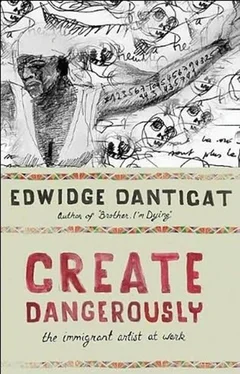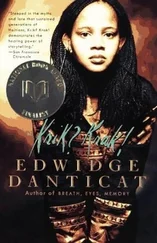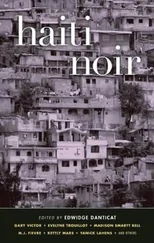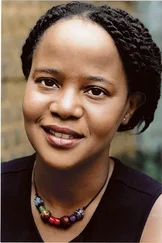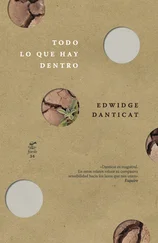My friend the Haitian novelist Dany Laferrière, who was a newspaper journalist during the Duvalier regime and was forced to leave for Canada during the dictatorship, has published a novel called Je suis un écrivain japonais , or I Am a Japanese Writer . In the book, the fictional author, a stand-in for Dany Laferrière, explains his decision to call himself a Japanese writer, concurring with the French literary critic Roland Barthes that “a text’s unity lies not in its origin but in its destination.”
“I am surprised” the fictional Laferrière writes,
to see how much attention is paid to a writer’s origins… I repatriated, without giving it a second thought, all the writers I read as a young man. Flaubert, Goethe, Whitman, Shakespeare, Lope de Vega, Cervantes, Kipling, Senghor, Césaire, Roumain, Amado, Diderot, they all lived in the same village that I did. Otherwise, what were they doing in my room? When, years later I myself became a writer and was asked, “Are you a Haitian writer, a Caribbean writer or a Francophone writer?” I would always answer that I took the nationality of my reader, which means that when a Japanese reader reads my books, I immediately become a Japanese writer.
Is there such a thing as an immigrant reader? he wonders.
I too sometimes wonder if in the intimate, both solitary and solidary, union between writers and readers a border can really exist. Is there a border between Antigone’s desire to bury her brother and the Haitian mother of 1964 who desperately wants to take her dead son’s body out of the street to give him a proper burial, knowing that if she does this she too may die? So perhaps after those executions when those young men and women were reading Caligula , Albert Camus became a Haitian writer. When they were reading Oedipus Rex and Antigone , Sophocles too became a Haitian writer.
“We, as we read,” Ralph Waldo Emerson wrote in an essay on history, “must become Greeks, Romans, Turks, priest and king, martyr and executioner; must fasten these images to some reality in our secret experience, or we shall learn nothing rightly.”
The nomad or immigrant who learns something rightly must always ponder travel and movement, just as the grief-stricken must inevitably ponder death. As does the artist who comes from a culture that is as much about harnessing life-joyous, jubilant, resilient life-as it is about avoiding death. Since he’d fashioned his dress and persona-a black suit and hat, nasal voice, and glasses-after Baron Samedi, the Vodou guardian spirit of the cemetery, François Duvalier should have known better than anyone that in Haiti people never really die. This is, after all, a place where heroes who are burned at the stake are said to evaporate into a million fireflies, where widows and widowers are advised to wear their nightgowns and pajamas inside out and wear red undergarments to keep their dead spouses out of their beds at night. And where mothers are sometimes advised to wear red bras to keep their dead babies from coming back to nurse at their breasts. Like ancient Egyptians, we Haitians, when a catastrophic disaster does not prevent it, recite spells to launch our dead into the next world, all while keeping them close, building elaborate mausoleums for them in our backyards. In another country, in the cold, with no fireflies, no red underwear or backyard mausoleums, the artist immigrant, or immigrant artist, inevitably ponders the deaths that brought her here, along with the deaths that keep her here, the deaths from hunger and executions and cataclysmic devastation at home, the deaths from paralyzing chagrin in exile, and the other small, daily deaths in between.
The immigrant artist ponders death the way they did in Gabriel Garcia Márquez’s Macondo, at the beginning of One Hundred Years of Solitude .
“We have still not had a death,” Márquez’s Colonel says. “A person does not belong to a place until someone is dead under the ground.” And the Colonel’s wife’s reply might have been the same as many an immigrant artist’s parents, guardian, or supporter: “If I have to die for the rest of you to stay here, then I will die.”
The immigrant artist, to borrow from Toni Morrison’s Nobel lecture knows what it is “to live at the edge of towns that cannot bear” our company, hamlets that need our labor but want our children banned from their schools, villages that want our sick shut out from their hospitals, big cities that want our elderly, after a lifetime of impossible labor, to pack up and go off somewhere else to die.
If I have to die for the rest of you to stay here, says the Colonel’s wife, then I will die. Like her, the immigrant artist must quantify the price of the American dream in flesh and bone. All this while living with the more “regular” fears of any other artist. Do I know enough about where I’ve come from? Will I ever know enough about where I am? Even if somebody has died for me to stay here, will I ever truly belong?
Albert Camus once wrote that a person’s creative work is nothing but a slow trek to rediscover, through the detours of art, those two or three images in whose presence his or her heart first opened. Over the years, I have tried to explore my two or three images in these rather simple essays. In each of these pieces, though, are several cities, a country, two independent republics in the same hemisphere, but obviously with different destines and goals in the world.
The immigrant artist shares with all other artists the desire to interpret and possibly remake his or her own world. So though we may not be creating as dangerously as our forebears-though we are not risking torture, beatings, execution, though exile does not threaten us into perpetual silence-still, while we are at work bodies are littering the streets somewhere. People are buried under rubble somewhere. Mass graves are being dug somewhere. Survivors are living in makeshift tent cities and refugee camps somewhere, shielding their heads from the rain, closing their eyes, covering their ears, to shut out the sounds of military “aid” helicopters. And still, many are reading, and writing, quietly, quietly.
While I was “at work” at 4:53 p.m., on January 12, 2010, the ground was shaking and killing more than two hundred thousand people in a 7.0 magnitude earthquake in Haiti. And even before the first aftershock, people were calling me asking, “Edwidge, what are you going to do? When are you going back? Could you come on television or on the radio and tell us how you feel? Could you write us fifteen hundred words or less?”
Perhaps this is why the immigrant artist needs to feel that he or she is creating dangerously even though she is not scribbling on prison walls or counting the days until a fateful date with an executioner. Or a hurricane. Or an earthquake.
Self-doubt is probably one of the stages of acclimation in a new culture. It’s a staple for most artists. As immigrant artists for whom so much has been sacrificed, so many dreams have been deferred, we already doubt so much. It might have been simpler, safer to have become the more helpful doctors, lawyers, engineers our parents wanted us to be. When our worlds are literally crumbling, we tell ourselves how right they may have been, our elders, about our passive careers as distant witnesses.
Who do we think we are?
We think we are people who risked not existing at all. People who might have had a mother and father killed, either by a government or by nature, even before we were born. Some of us think we are accidents of literacy.
I do.
We think we are people who might not have been able to go to school at all, who might never have learned to read and write. We think we are the children of people who have lived in the shadows for too long. We sometimes even think that we are like the ancient Egyptians, whose gods of death demanded documentation of worthiness and acceptance before allowing them entry into the next world. Might we also be a bit like the ancient Egyptians in the way of their artists and their art, the pyramid and coffin texts, tomb paintings, and hieroglyphic makers?
Читать дальше
